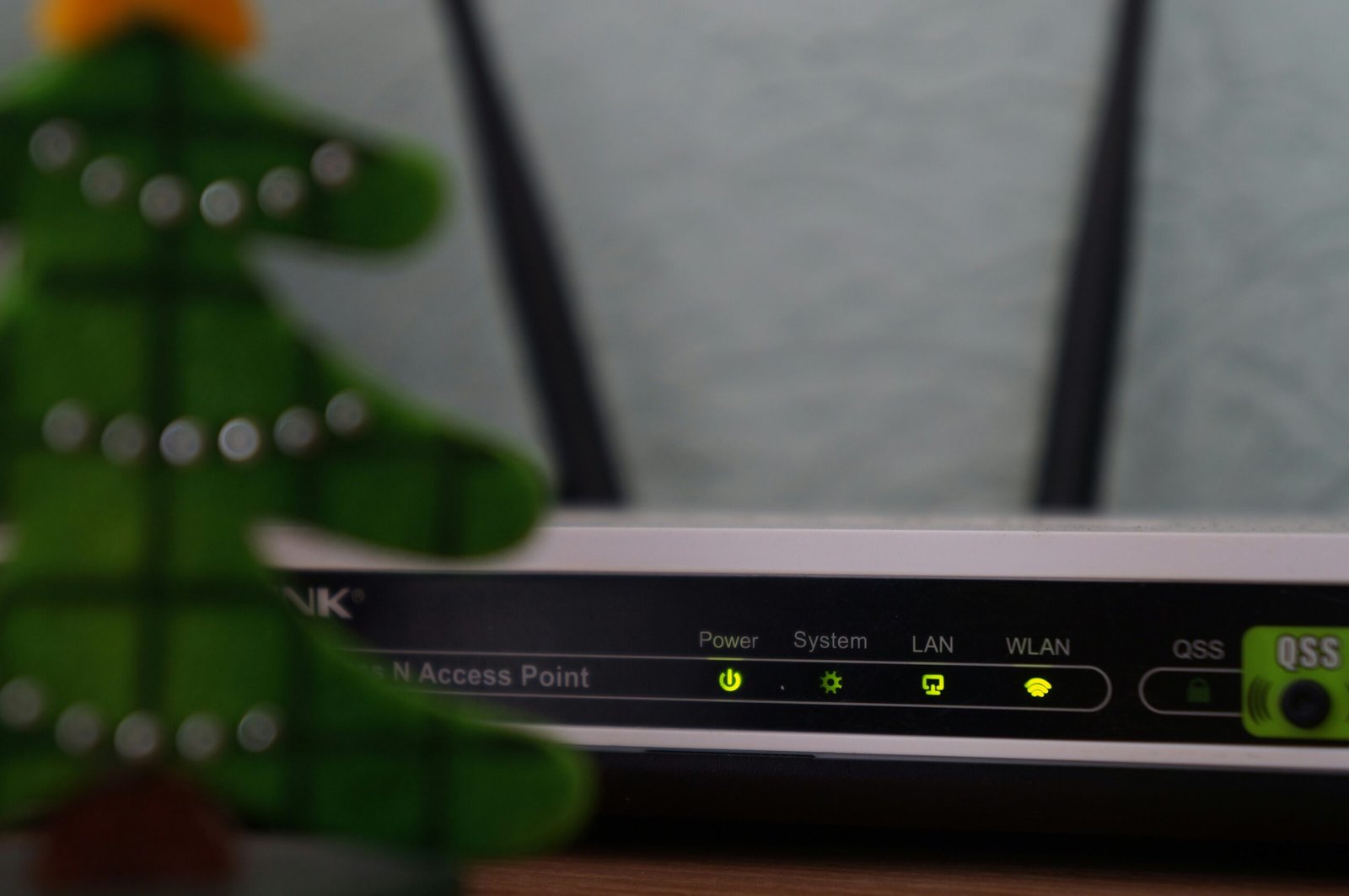
Factors to Consider When Choosing the Right WiFi Router for Online TV Streaming
When it comes to streaming TV shows and movies online, a reliable and high-performing WiFi router is essential. With so many options available in the market, it can be overwhelming to choose the right one. However, by considering a few key factors, you can ensure that you make the best decision for your streaming needs.
1. Speed and Bandwidth
One of the most important factors to consider when choosing a WiFi router for online TV streaming is the speed and bandwidth it offers. Streaming high-definition content requires a fast and stable internet connection, so it’s crucial to choose a router that can handle the demands of streaming without buffering or lagging. Look for routers that support the latest WiFi standards, such as 802.11ac, which offer faster speeds and better performance.
2. Range and Coverage
Another important consideration is the range and coverage of the WiFi router. You want a router that can provide a strong and reliable signal throughout your home, especially if you plan on streaming in different rooms or on multiple devices. Look for routers with multiple antennas or beamforming technology, which can help extend the range and improve the coverage of your WiFi network.
3. Dual-Band or Tri-Band
When choosing a WiFi router for online TV streaming, it’s worth considering whether you need a dual-band or tri-band router. Dual-band routers operate on two frequencies, 2.4GHz and 5GHz, while tri-band routers operate on three frequencies. The advantage of a dual-band router is that it can support multiple devices and offer better performance in crowded WiFi environments. However, if you have a lot of devices or plan on streaming 4K content, a tri-band router may be a better option as it can provide even more bandwidth and reduce congestion.
4. Security Features
Security is always a concern when it comes to internet connectivity, and streaming TV shows and movies online is no exception. Look for WiFi routers that offer advanced security features, such as WPA3 encryption, which provides stronger protection against unauthorized access. Additionally, routers with built-in firewalls and parental controls can help ensure a safe and secure streaming experience for you and your family.
5. Ease of Setup and Management
Finally, consider the ease of setup and management when choosing a WiFi router for online TV streaming. Look for routers that come with user-friendly interfaces and intuitive setup processes. Some routers even offer smartphone apps that make it easy to monitor and manage your network from anywhere. Additionally, routers with automatic firmware updates can ensure that you always have the latest security patches and performance improvements without any hassle.
By considering these factors, you can choose the right WiFi router for online TV streaming that meets your specific needs and ensures a smooth and uninterrupted streaming experience. Whether you’re binge-watching your favorite shows or enjoying a movie night with your family, a reliable WiFi router is the key to a seamless streaming experience.
When it comes to online TV streaming, having a reliable and fast internet connection is crucial. The internet speed requirements mentioned above are just the minimum recommendations for streaming content in different resolutions. However, if you want to enjoy a seamless streaming experience without any buffering or lag, it’s advisable to have higher internet speeds than the minimum requirements.
Streaming platforms like Netflix, Hulu, and Amazon Prime Video use a technology called adaptive streaming, which adjusts the quality of the video based on your internet connection. This means that if your internet speed fluctuates or drops below the recommended minimum, the streaming platform will automatically lower the video quality to prevent buffering. While this can help in maintaining a smooth playback, it may result in a downgrade in video quality.
Moreover, if you have multiple devices connected to the same WiFi network, each device will consume a portion of the available bandwidth. For example, if you have a smart TV, a smartphone, and a tablet connected to the WiFi network, all streaming content simultaneously, the internet speed may get divided among these devices, potentially affecting the streaming quality.
In addition to multiple devices, if you engage in other bandwidth-intensive activities like online gaming or file downloading while streaming, it can put additional strain on your internet connection. These activities require a significant amount of bandwidth, and if your internet speed is not sufficient, it can lead to buffering, lag, or even complete disconnection from the streaming service.
Therefore, it’s always a good idea to have a higher internet speed than the minimum recommendations to ensure a smooth and uninterrupted streaming experience. You can check with your internet service provider to see if they offer higher speed plans that can accommodate your streaming needs. Additionally, you can consider upgrading your WiFi router to a more advanced model that supports higher speeds and offers better coverage throughout your home.
2. WiFi Standards
The next factor to consider is the WiFi standard supported by the router. WiFi standards are protocols that determine the speed and range of a WiFi network. The most common WiFi standards in use today are 802.11n, 802.11ac, and 802.11ax (also known as WiFi 6).
802.11n is the oldest of these standards and offers a maximum theoretical speed of 300 Mbps. It operates on both the 2.4 GHz and 5 GHz frequency bands, but the 2.4 GHz band is more prone to interference from other devices like cordless phones and microwave ovens. This standard is still widely used, especially in older devices that do not support newer standards.
802.11ac is the next generation WiFi standard and offers faster speeds and better range compared to 802.11n. It operates only on the 5 GHz frequency band and can provide speeds of up to 1.3 Gbps (Gigabits per second) with a compatible device. The 5 GHz band is less crowded and less susceptible to interference, making it ideal for streaming high-definition content.
802.11ax, or WiFi 6, is the latest WiFi standard and offers even faster speeds and better performance compared to 802.11ac. It operates on both the 2.4 GHz and 5 GHz frequency bands and can provide speeds of up to 10 Gbps with a compatible device. WiFi 6 also introduces new technologies such as MU-MIMO (Multi-User Multiple-Input Multiple-Output) and OFDMA (Orthogonal Frequency Division Multiple Access), which further enhance the efficiency and capacity of the network.
When choosing a WiFi router for online TV streaming, it’s advisable to go for a router that supports at least the 802.11ac standard. This will ensure that you have sufficient speed and range to handle the demands of streaming high-quality content. However, if you want to future-proof your setup and take advantage of the latest technologies, opting for a WiFi 6 router would be a wise choice. WiFi 6 is backward compatible with older devices, so even if your current devices do not support WiFi 6, they can still connect to the network using their respective supported standards.
3. Dual-Band vs. Tri-Band Routers
Another important consideration when choosing a WiFi router for online TV streaming is whether to go for a dual-band or tri-band router. Dual-band routers operate on both the 2.4 GHz and 5 GHz frequency bands, while tri-band routers have an additional 5 GHz band.
The advantage of dual-band routers is that they offer more flexibility in terms of device compatibility. Most devices, including smartphones, tablets, and laptops, support the 2.4 GHz band, so you can connect them to the router’s 2.4 GHz band and reserve the 5 GHz band for streaming devices like smart TVs and streaming boxes, which typically support both bands.
Tri-band routers, on the other hand, offer even more bandwidth and can provide better performance if you have multiple streaming devices connected to your network. With a tri-band router, you can dedicate one 5 GHz band solely for streaming, ensuring that there is no congestion or interference from other devices.
Furthermore, tri-band routers utilize a technology called dynamic frequency selection (DFS), which allows them to automatically switch to less congested channels to ensure a smooth streaming experience. This can be particularly beneficial in crowded areas or apartment buildings where there are multiple WiFi networks competing for the same channels.
Moreover, tri-band routers often come equipped with advanced features such as beamforming and MU-MIMO (Multi-User, Multiple-Input, Multiple-Output) technology. Beamforming allows the router to focus its signal directly towards connected devices, improving signal strength and range. MU-MIMO technology enables the router to communicate with multiple devices simultaneously, reducing latency and improving overall network performance.
Ultimately, the choice between a dual-band and tri-band router depends on your specific needs and the number of devices that will be connected to your network. If you have multiple streaming devices or engage in other bandwidth-intensive activities, a tri-band router may be worth considering. However, if you have a smaller network with fewer devices, a dual-band router may suffice.
4. WiFi Range and Antennas
The WiFi range of a router is another important factor to consider, especially if you have a large home or multiple floors. The range of a router is determined by factors like the number and quality of antennas, the power of the wireless radio, and interference from other devices.
When choosing a WiFi router for online TV streaming, look for routers with multiple high-gain antennas. These antennas can provide better coverage and range compared to routers with internal antennas or fewer antennas.
Having multiple high-gain antennas allows the router to transmit and receive signals from different directions, increasing the chances of a strong and stable connection. These antennas are designed to focus the signal in specific directions, which can be beneficial if you have specific areas in your home where you need a stronger signal, such as the living room where you plan to stream movies or the home office where you need a reliable connection for video calls.
In addition to the number and quality of antennas, the power of the wireless radio also plays a crucial role in determining the range of a router. A router with a higher power output can transmit the signal over a greater distance, allowing you to enjoy a strong and stable connection even in the far corners of your home.
However, it’s important to note that increasing the power output of the router may not always be the best solution, especially in densely populated areas where there are many other WiFi networks. In such cases, interference from neighboring networks can impact the performance of your router, regardless of its power output or number of antennas.
To mitigate this issue, some routers come equipped with technologies like beamforming. Beamforming allows the router to focus the WiFi signal towards the connected devices, improving range and signal strength. Instead of broadcasting the signal in all directions, beamforming technology directs the signal towards the devices that need it the most, reducing interference and improving performance.
Another option to consider is mesh networking. Mesh networking uses multiple routers placed throughout your home to create a single WiFi network with seamless coverage. This means that instead of relying on a single router to cover your entire home, you can have multiple access points strategically placed to ensure a strong and reliable connection in every room.
Each mesh node acts as a relay, extending the coverage of the network and eliminating dead zones. This is particularly useful in large homes or homes with multiple floors, where a single router may struggle to provide adequate coverage. With mesh networking, you can enjoy a seamless online TV streaming experience, no matter where you are in your home.
5. Quality of Service (QoS)
Quality of Service (QoS) is a feature found in many modern routers that allows you to prioritize certain types of network traffic over others. This can be useful for online TV streaming, as it ensures that your streaming devices get the necessary bandwidth and priority over other devices on your network.
With QoS, you can assign a higher priority to streaming traffic, ensuring that it gets sufficient bandwidth even if other devices on your network are using the internet. This can help prevent buffering and interruptions during your streaming sessions.
When choosing a WiFi router for online TV streaming, look for routers that have QoS capabilities. Some routers even have specific presets for streaming services like Netflix and YouTube, which automatically prioritize traffic from these services.
One important aspect to consider when utilizing QoS is the ability to customize and fine-tune the settings to suit your specific needs. Different streaming services may require different levels of priority, and being able to adjust the QoS settings accordingly can greatly enhance your streaming experience.
Furthermore, it is worth noting that QoS is not limited to just streaming traffic. It can also be used to prioritize other types of network traffic, such as online gaming or video conferencing. This versatility allows you to optimize your network performance for various activities and ensure a smooth and uninterrupted experience.
In addition to QoS, there are other factors to consider when selecting a WiFi router for online TV streaming. These include the router’s wireless range, speed, and security features. A router with a wide coverage area and high-speed capabilities will ensure that you can enjoy your favorite shows and movies without any lag or buffering issues, even in areas far from the router.
Security is also a crucial consideration, especially when streaming content online. Look for routers that offer advanced security features such as WPA3 encryption and built-in firewalls to protect your network from potential threats and unauthorized access.
Ultimately, choosing the right WiFi router for online TV streaming involves considering a combination of factors, including QoS capabilities, wireless range, speed, and security features. By carefully evaluating these aspects, you can ensure a seamless streaming experience and make the most out of your online entertainment.




iptvsmarterplus.com
so helpful !!!